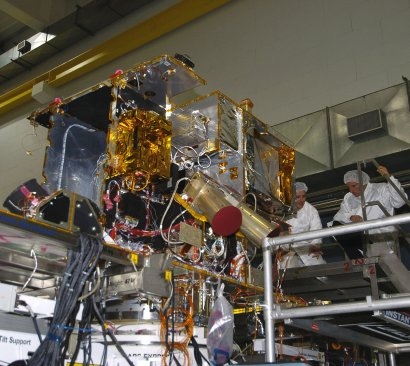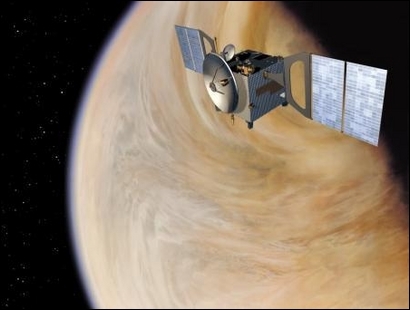10 August 2005
Functional tests successfully completed
The Venus Express spacecraft recently completed development and integration at Intespace in Toulouse, France. It has been undergoing a full series of functional tests since October 2004.

The spacecraft has been subjected to system-level tests, including vibration, acoustic and thermal vacuum testing to verify that it will survive launch and withstand the cold of deep space, as well as the harsh thermal conditions created by the vicinity of the Sun at Venus.
After completing tests, the spacecraft has been shipped to its launch site in Baikonur, Kazakhstan, where it is scheduled to depart in October atop a Soyuz launcher with a Fregat upper stage. The journey to Venus will take 153 days, plus a further 5 days to move into orbit about the planet.
Studying the atmosphere of Venus for Europe

CNES is involved in this European mission and is contributing to 3 science experiments. The Virtis1 and Spicav2 spectrometers will analyse the planet’s atmosphere, while the Aspera-43 instrument will study its ionized environment.
The Venus Express mission has taken only 4 years from concept to launch. The project got underway in 2001 and the satellite is derived directly from Mars Express and re-uses some of its subsystems. Esa selected EADS Astrium to build the spacecraft in October 2002.
1 Virtis: Visible and InfraRed Thermal Imaging Spectrometer
2 Spicav: SPectroscopy for the Investigation of the Characteristics of the Atmosphere of Venus
3 Aspera-4: Analyser of Space Plasmas and EneRgetic Atoms